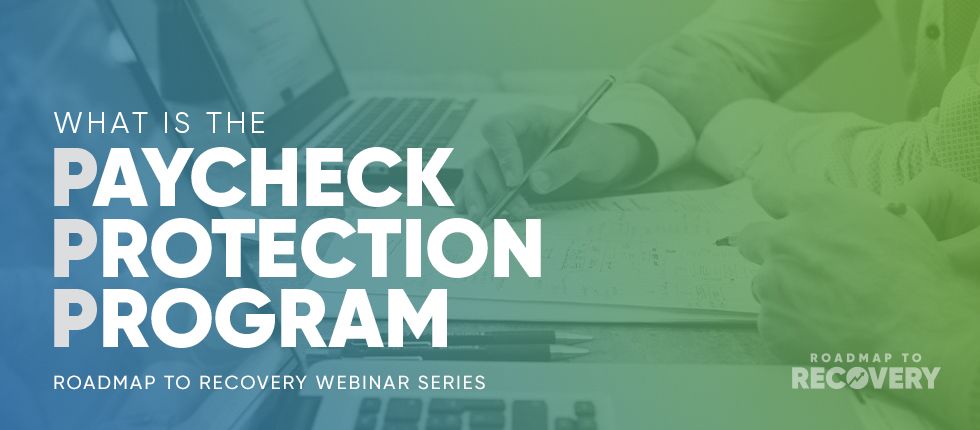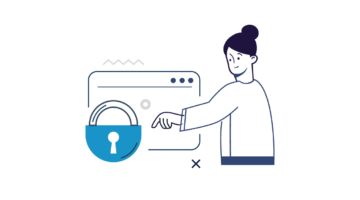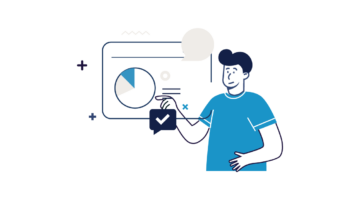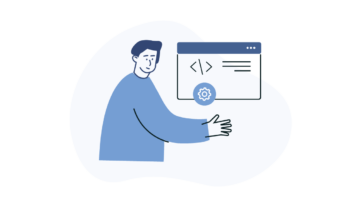Understanding the Paycheck Protection Program
As part of the CARES Act passed by Congress on March 26, the federal government is implementing many programs to help businesses. One such program is the Paycheck Protection Program (PPP), meant to incentivize business owners and decisionmakers to keep employees on their payrolls. Like many of the other loans authorized by the CARES Act, these loans will be disbursed through Small Business Administration (SBA) lenders. Here are a few of your questions about the Paycheck Protection Program, answered.
What is the Paycheck Protection Program?
The Paycheck Protection Program is intended to provide cash-flow assistance to businesses through federally guaranteed loans. The loans are disbursed to employers who maintain their payroll during the COVID-19 declared emergency. Employers who comply with payroll maintenance are eligible for loan forgiveness for certain expenses and 8 weeks of payroll forgiveness. Payroll forgiveness will be determined by employee retention rates and salary levels.
Unlike other loans provided by the SBA, the PPP loans are not subject to SBA fees. Payment can also be deferred for six to twelve months in an effort to ensure that businesses can make their other payments and keep their doors open in the wake of COVID-19.
Small businesses and other businesses, like nonprofits, can apply for the loans if they had economic injury as a result of the state of emergency. The dates of economic injury are between February 15, 2020 and June 30, 2020. The CARES Act also provides that the program be retroactive to February 15, 2020 to incentivize employers to bring laid off and furloughed employees back onto their payroll.
Who is eligible for the Program?
In order to be eligible for the PPP, the business must have been in operation on February 15, 2020. This is a measure enacted by Congress to dissuade loan application fraud. In addition to being in operation on February 15, Congress and the SBA have given the following guidelines for who is eligible for the PPP:
- Any of the following businesses with fewer than 500 employees or the applicable North American Industry Classification System (NAICS) standard provided by the SBA:
- Small businesses
- 501(c)(3) nonprofits
- 501(c)(19) veterans organizations
- Tribal business concerns
- Independent contractors
- Certain self-employed individuals
- Any business that employs fewer than 500 employees per physical location with an NAICS code beginning with 72 will have their affiliation rules waived
- Affiliation rules are also waived for businesses assigned a franchise identifier code by the SBA
How do you apply for the Paycheck Protection Program?
You can apply for a PPP loan through any of the SBA’s pre-approved 7(a) lenders. These include banks, credit unions and other financial institutions. The CARES Act also gives the SBA the resources to approve additional lenders to accommodate the influx of applicants. A list of SBA-approved 7(a) lenders can be found here.
To apply, you’ll need the following statements, reports and documentation:
- Your 2019 IRS Quarterly 940, 941 or 944 payroll tax reports
- The last twelve months of payroll reports beginning with your last payroll date
- 2019 IRS Form 1099 for any independent contractors that would otherwise be your employee
- Documentation with the total of all health insurance premiums paid by the company
- Documents showing the sum of all company-paid retirement funding
- Documentation of employer contributions to 401K and IRA plans
What can I use my PPP funding for?
Funding disbursed from your Paycheck Protection Program loan can be used for any of the following:
- Employee compensation, including:
- Salary and wages
- Commission, cash tips or the equivalent
- Vacation time or Paid Time Off (PTO)
- Family, medical or sick leave
- Healthcare benefits and insurance premiums
- Retirement benefits
- State or local tax assessed on wage compensation
- Interest payments on mortgage obligations, not including principal
- Rent, including rent for a lease agreement
- Utilities
- Interest payments on other debts incurred before February 15, 2020
If the funding is used for anything other than a pre-approved expense dictated by the SBA and the CARES Act, the business owner will not be eligible for loan forgiveness.
Is the Paycheck Protection Program compatible with other CARES Act loans?
Your Paycheck Protection Program loan is compatible with other CARES Act loans and other loans you may have already had. Often, businesses that are eligible for the PPP are also eligible for other Economic Injury Disaster Loans (EIDLs) provided by the SBA. The SBA is allowing the disbursement of both to those that are approved, but the funding cannot be applied to the same expenses.
For example, say you are using your PPP loan disbursement for payroll and mortgage interest payments. Your EIDL could not also be used for payroll and mortgage interest payments. You would have to use the disbursement from your EIDL for another expense.
How do you get loan forgiveness from the Paycheck Protection Program?
You can apply for loan forgiveness through the lender you used to apply for the PPP loan. In order to apply for loan forgiveness, you must provide your lender with the following:
- Documentation verifying the number of employees on your payroll. This document should include:
- Each employee’s pay rate
- IRS payroll tax filings
- State income tax filings
- Unemployment filings
- Documentation verifying the payments you’ve made on mortgage interest, lease or rent payments and utilities payments.
- Certification from an authorized representative of your company that states that the documentation you’ve provided is true. This document should also certify that any amount that is being forgiven was used in accordance with the SBA’s PPP guidelines.
How will forgiveness work?
In May 2020, the SBA released some guidelines regarding how the forgiveness process will work.
- Rather than the 8-week covered period beginning as soon as the loan is disbursed, borrowers can choose to use an “Alternate Payroll Covered Period” that better aligns with the company’s pay schedule.
- Approved expenses can be both paid and incurred during the 8 weeks.
- Full-time designations will be based on a 40-hour work week.
- Forgiveness for payroll costs will not decrease in the event that an employee is fired for cause, voluntarily resigns or refuses to be rehired.
- Forgiveness calculations will be compared to wages from January 1, 2020 to March 31, 2020.
- Loans less than $2 million will be exempt from audits and assumed to be in good faith.
The Paycheck Protection Program is one of many financial and economic stimulus options available to business owners. Reach out to an accountant or an SBA representative to learn what else you can be doing for your business.
Learn More About Maximizing Your PPP Loan Forgiveness
The information provided is based upon facts that were available at the time of publication and are subject to change. NOW CFO makes no warranties, express or implied, or representations as to the accuracy, completeness or timeliness of the information provided. NOW CFO cannot be held liable for any claims or damages that result from reliance on this information.



